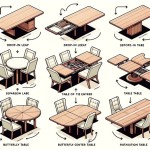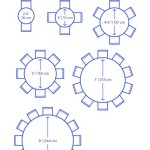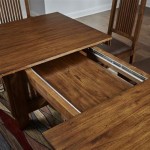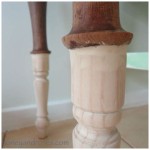```html
Victorian Mahogany Pedestal Dining Table: A Study in Elegance and Craftsmanship
The Victorian era, spanning from 1837 to 1901, encompassed a period of significant social, economic, and technological advancement. This era witnessed a burgeoning middle class with increased disposable income, leading to a heightened interest in home furnishings and décor. Among the most sought-after pieces for the Victorian home was the mahogany pedestal dining table. These tables, renowned for their beauty, durability, and functionality, became a symbol of status and refinement.
The enduring appeal of the Victorian mahogany pedestal dining table lies in several factors. Mahogany, a dense and durable hardwood, was prized for its rich color, fine grain, and ability to be intricately carved. The pedestal design, typically featuring a single central support or multiple scrolled legs emanating from a central point, allowed for greater legroom and ease of conversation during mealtimes. Furthermore, the tables often incorporated extending mechanisms, enabling them to accommodate varying numbers of guests for different occasions. The synthesis of quality materials, innovative design, and meticulous craftsmanship contributed to the lasting legacy of these tables.
Materials and Construction Techniques
Mahogany was the primary wood of choice for Victorian dining tables, imported primarily from the West Indies, Honduras, and later, Africa. Its strength and stability made it ideal for constructing large and expandable tables. The rich, reddish-brown hue of mahogany added to its aesthetic appeal, and its ability to take a high polish enhanced its luxurious appearance. Cabinetmakers meticulously selected mahogany planks based on their grain patterns and color variations, ensuring that each table possessed a unique character.
The construction of a Victorian mahogany pedestal dining table involved a combination of traditional woodworking techniques and emerging technologies. Joinery methods such as mortise and tenon, dovetail, and tongue and groove were employed to create robust and long-lasting connections. Skilled craftsmen carefully shaped each component, paying close attention to detail. The pedestal base was often constructed from layers of laminated mahogany, providing exceptional strength and stability. This lamination process involved gluing multiple thin veneers of mahogany together under pressure, creating a durable and warp-resistant structure.
The table tops were typically constructed from multiple mahogany boards joined edge-to-edge. These boards were carefully selected to match the grain and color as closely as possible, creating a seamless and visually appealing surface. The edges of the table tops were often shaped with elaborate moldings, adding further ornamentation. Extending mechanisms, such as draw-leaf or leaf-and-runner systems, were incorporated to allow the table to be expanded to accommodate additional guests. These mechanisms were meticulously engineered to ensure smooth and reliable operation.
Design Features and Ornamentation
Victorian mahogany pedestal dining tables were characterized by their elegant and elaborate design features. The pedestal base was often adorned with intricate carvings, such as acanthus leaves, scrolls, and floral motifs. These carvings were executed with remarkable precision and skill, adding a touch of opulence to the table's overall appearance. The shape of the pedestal base varied, ranging from simple cylindrical columns to more elaborate designs featuring multiple scrolled legs or paw feet.
The table tops were often bordered with decorative moldings, adding visual interest and defining the edge of the surface. These moldings could be simple and understated, or more elaborate, featuring carved details or inlaid banding. The corners of the table tops were sometimes rounded or chamfered, softening the overall aesthetic. In some cases, the table tops were inlaid with contrasting woods, such as rosewood or ebony, creating intricate patterns and designs. Inlay work required exceptional skill and patience, and it added a further layer of sophistication to the table.
The size and shape of the Victorian mahogany pedestal dining table varied depending on the intended use and the size of the dining room. Round tables were popular for smaller gatherings, while rectangular tables were more suitable for larger dinner parties. Oval tables offered a compromise between the two shapes, providing ample seating while maintaining a sense of intimacy. The height of the table was also carefully considered, ensuring comfortable seating for diners. The design of the table was often influenced by prevailing fashion trends, with elements of Gothic Revival, Rococo Revival, and Renaissance Revival styles incorporated into the overall aesthetic.
Maintenance and Preservation
To ensure the longevity and beauty of a Victorian mahogany pedestal dining table, proper maintenance and preservation are essential. Regular cleaning is crucial to remove dust and grime that can accumulate on the surface. A soft, damp cloth can be used to wipe down the table top, followed by a dry cloth to remove any excess moisture. Harsh chemicals and abrasive cleaners should be avoided, as they can damage the finish. A specialized furniture polish can be used periodically to enhance the shine and protect the wood.
Protecting the table from excessive heat and moisture is also important. Hot dishes and beverages should be placed on trivets or coasters to prevent damage to the finish. Spills should be wiped up immediately to prevent staining. The table should be kept away from direct sunlight, as prolonged exposure can cause the wood to fade and dry out. Controlling the humidity in the room can also help to prevent warping and cracking.
If the table sustains any damage, such as scratches, dents, or chips, it is advisable to consult a professional furniture restorer. A skilled restorer can repair the damage and restore the table to its original condition. Refinishing a Victorian mahogany pedestal dining table is a complex process that should only be undertaken by experienced professionals. Stripping the old finish, repairing any damage, and applying a new finish requires specialized knowledge and techniques. Proper maintenance and preservation will ensure that a Victorian mahogany pedestal dining table remains a cherished heirloom for generations to come.
The Victorian Mahogany Pedestal Dining Table exemplifies the era's dedication to quality, craftsmanship, and aesthetic appeal. Its enduring presence in antique collections and its continued desirability as a statement piece testify to its timeless elegance and the enduring legacy of Victorian design.
```
Oval Dining Table Mahogany Yola Gray Antiques Interiors

Victorian Dining Table In Mahogany 1800 For At Pamono
Lot American Victorian Mahogany Pedestal Extension Dining Table Late 19th Century H 29 75 X W 56 L In Each Leaf 14 5

Victorian Round Dining Table Akd Furniture

Victorian Oval Extendable Dining Table In Mahogany 1860s For At Pamono

Victorian Mahogany Oval Pedestal Dining Table 900219 Ingantiques Co

R J Horner Victorian Mahogany Pedestal Extension Dining Table Newly Refinished For At 1stdibs

Antique Tables Dining Chairs At Elisabeth James Furniture Warehouse In

Sold At Auction A Large Victorian Mahogany Pedestal Dining Table 150x78cm

Late Victorian Mahogany Pedestal Dining Table Ebth








